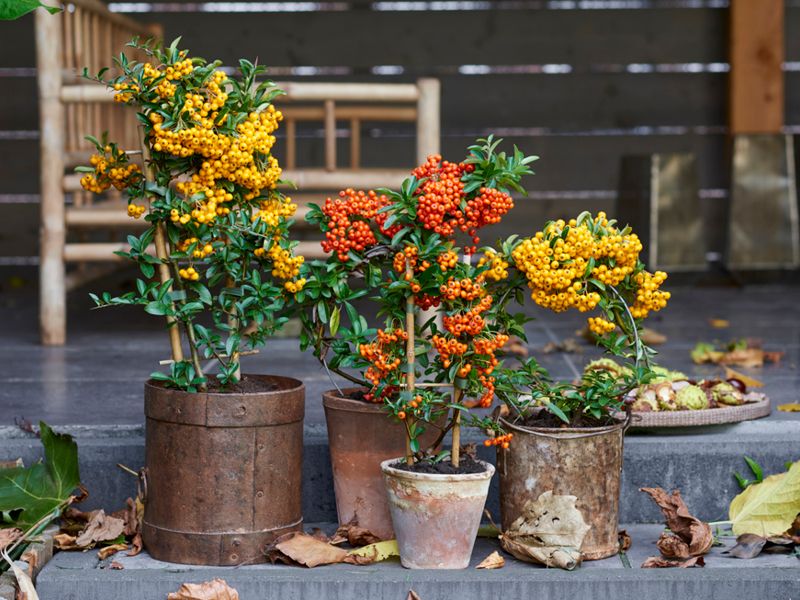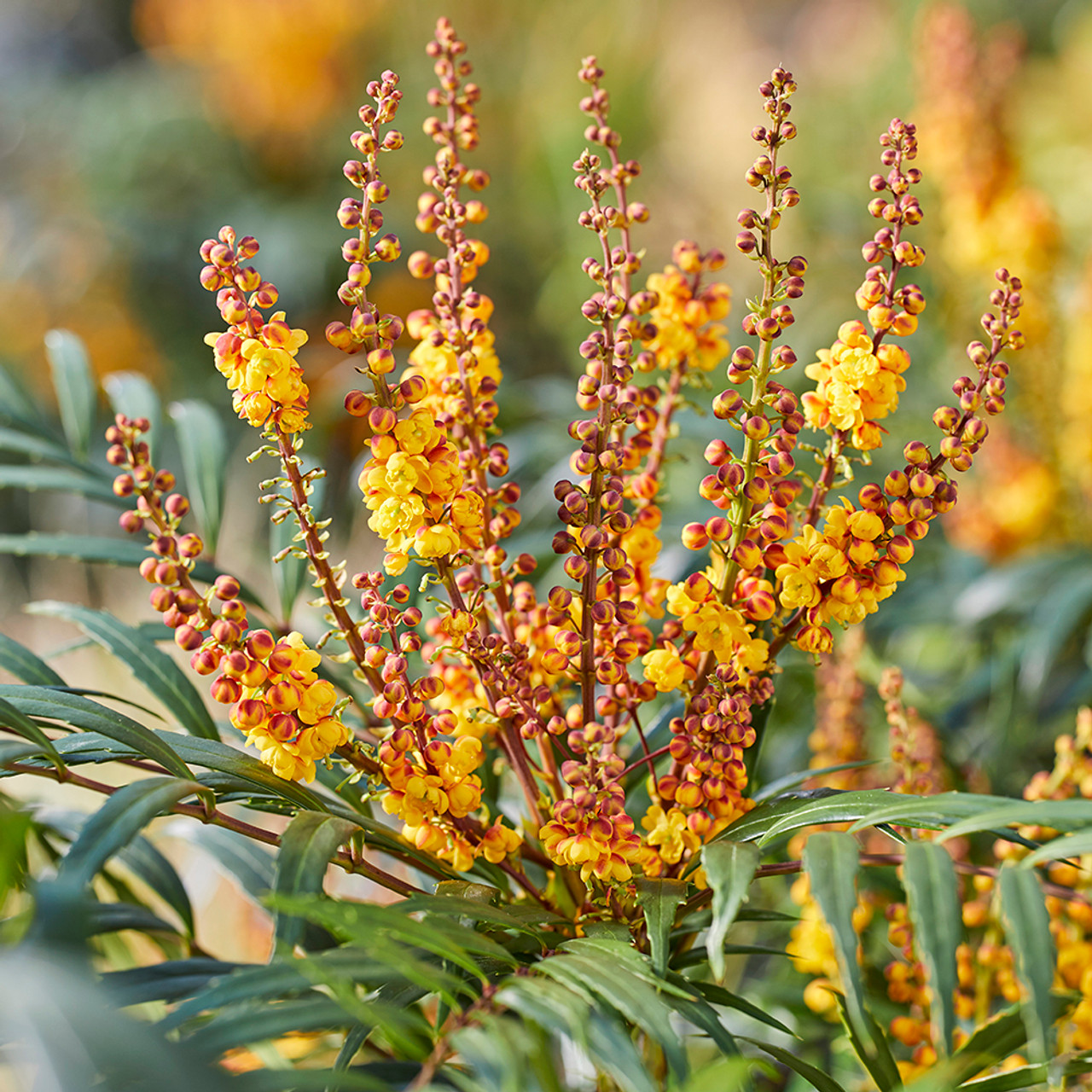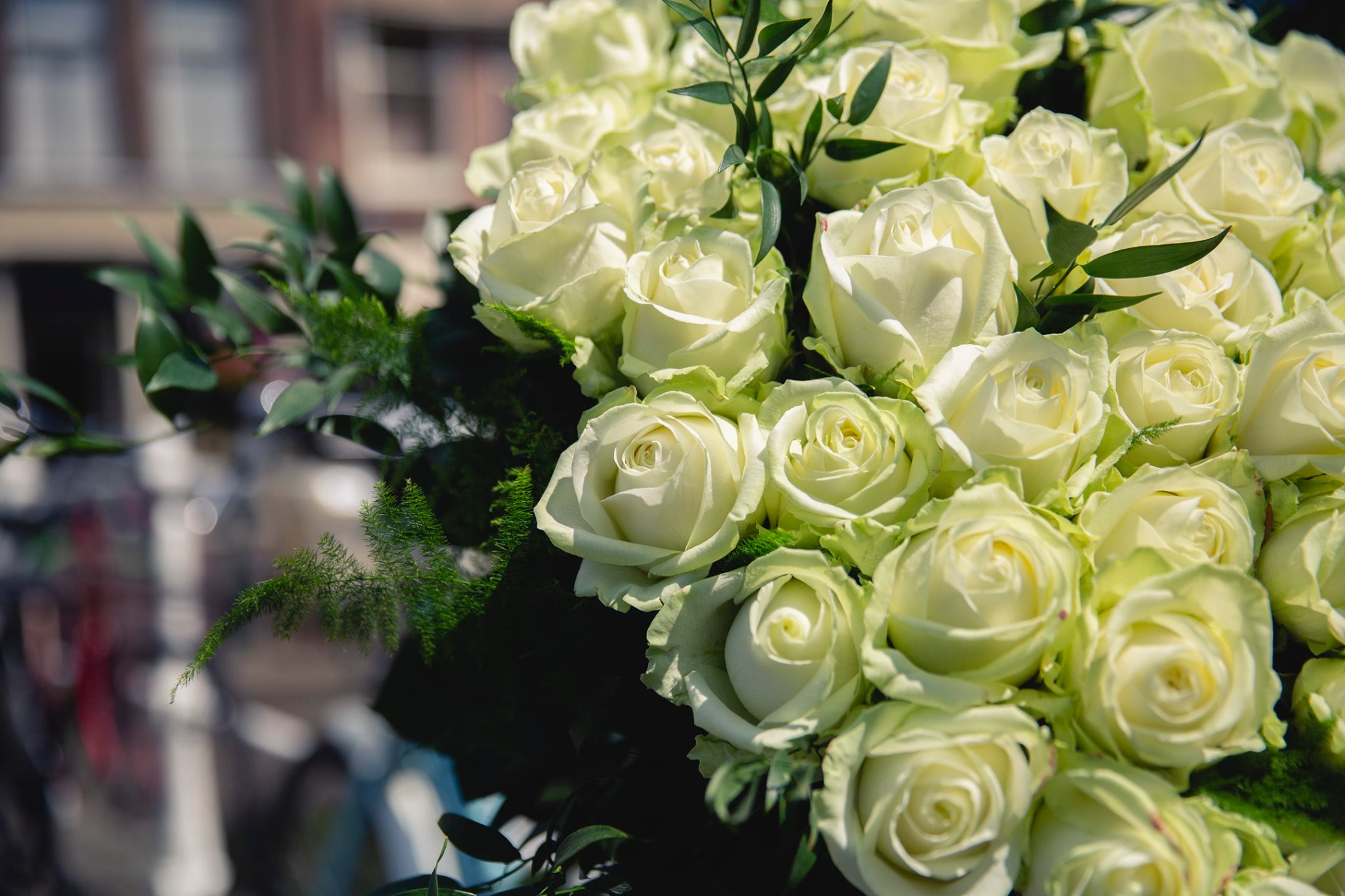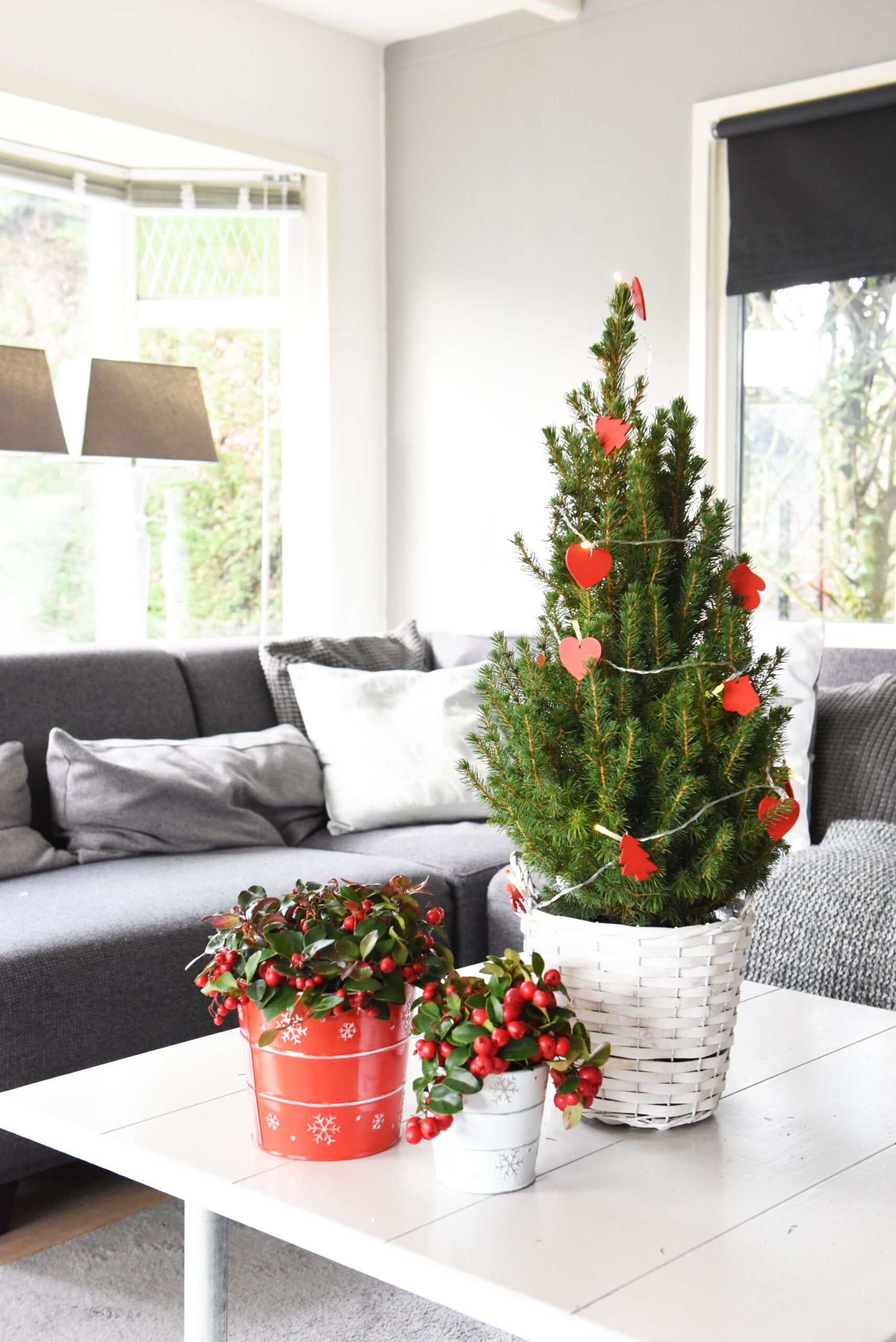September and October are truly the months when the Pyracantha, also known as Firethorn, gains more color in its berries and steals the show in many gardens or on terraces. It is precisely at the moment when many spring-blooming and summer-blooming perennials have passed their prime and are cautiously preparing for winter. It’s therefore important to have this climbing shrub available in your store.
In this news message, we focus on the Pyracantha coccinea varieties ‘Red Star’ & ‘Sunny Star’, with red and yellow-orange berries, respectively. Both varieties are characterized by having fewer thorns and more berries compared to other Pyracantha varieties. This is a great selling point to share with your customers. Additionally, the Pyracantha is evergreen, so it stays green throughout the winter.
The Pyracantha can be used in various ways in the garden or on the terrace. The climbers on a trellis also do well as stand-alone plants in large pots. Furthermore, the Pyracantha is an attractive climber against a fence or wall, though it does need some support, such as tying, to climb properly and upright.
You may also encounter the Pyracantha as a hedge or espalier, so there are plenty of options!
The ornamental value of the Pyracantha is actually spread throughout the year: after the winter, beautiful new, fresh green leaves appear, and in June, white flowers that attract bees and butterflies. These bees and butterflies are essential for pollinating the flowers so that they can develop into beautiful red or yellow-orange berries starting in September, which can be enjoyed by consumers well into the winter months.
If you want to offer additional tips to your customers, you can share the following about these Pyracantha varieties:
– These Pyracantha varieties are highly frost-resistant.
– These Pyracantha varieties bear flowers and berries on two-year-old wood.
This means that these climbing shrubs should not be pruned completely every
year, as this will significantly reduce berry formation in the following
season.
Trimming back some long shoots here and there is not a problem and is also
necessary to keep the Pyracantha in check.
– Birds sometimes use the Pyracantha as a nesting site if it has thorns, as the
thorns help keep cats at a safe distance.
Pyracanthas come in various shapes and varieties. If you’re interested, feel free to check out the selection from Hoogeveen Plants in Hazerswoude-Dorp.







